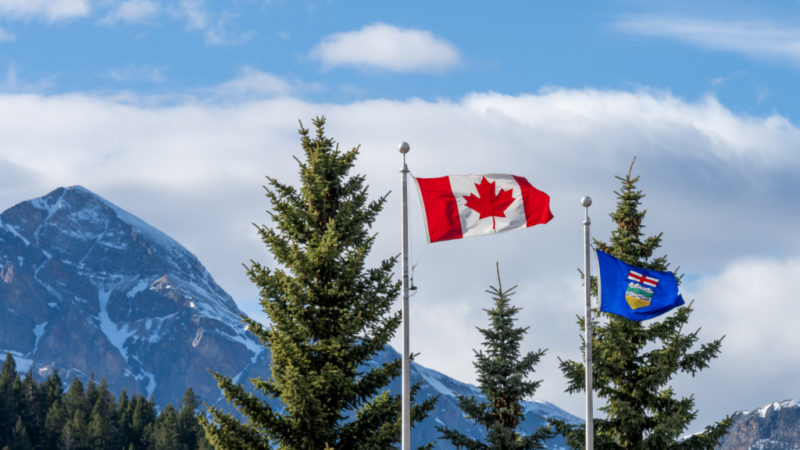Will Canada’s federal dental plan close gaps in provincial coverage?

When asked whether the Canadian Dental Care Plan (CDCP) will ultimately bridge provincial gaps in public dental insurance coverage, Douglas E. Angus strikes a cautious tone.
“It’s possible,” says the professor emeritus at the University of Ottawa’s Telfer School of Management. “But let’s put it this way,” he says. “I wouldn’t want to bet on it.”
The health policy expert believes any progress would be limited to some convergence between various provinces.
He isn’t the only one to express doubts. While the 2023 federal budget allocated $13 billion over five years to implement the CDCP, fractures in a national vision are starting to emerge. In June, Alberta Premier Danielle Smith announced plans to withdraw from the plan by 2026.
Alberta: The highest public dental coverage
Alberta already boasts the highest public dental insurance coverage in Canada, with 7.8% of its population aged 12 and older benefiting from provincial programs.

But the compensation for most procedures performed under Alberta’s low-income dental program generally falls short of the province’s suggested fee guide, said Dr. Jenny Doerksen, president of the Alberta Dental Association.
“These rates have remained stagnant for over seven years, reimbursing less than half of the agreed-upon provincial fee guide,” she added. “Other health professions have had their operating costs reviewed over the last few years, but oral healthcare has been overlooked.”
Moreover, only Dental and Optical Assistance for Seniors (DASP) allows dentists to balance bill patients. Alberta Works, Child Dental Benefit, Child Health Benefit, Supplementary Dental Coverage for those on AISH, Children in Care, and Family Support for Children with Disabilities do not.
Balancing bills are allowed under the CDCP — and the federal program’s fee grid is closer Alberta’s suggested fee guide.
“Serving Alberta’s low-income patients often means operating at a significant loss for dentists,” Doerksen said, adding that provincial programs would need to be modernized and better funded to replace the federal plan successfully.
New Brunswick: The lowest public coverage
At the other end of the spectrum, New Brunswick has the lowest public dental coverage in Canada, covering only 3.1% of its population — significantly below the national average of 4.4%.
In contrast, the province had 4,166 residents who received care under CDCP as of Sept. 5, representing 7.53% of eligible applicants, according to federal participation data.
It may explain why the New Brunswick Dental Society (NBDS) has described the plan as a “historic” opportunity to improve access to dental care, despite challenges like staff shortages.
“We face some challenges in recruitment, especially in northern francophone communities,” says NBDS executive director Paul Blanchard, citing fierce competition for dental practitioners. Newfoundland, for example, offers recent graduates a $50,000 annual bursary to help offset education costs.
Having a plan is one thing. Finding enough dentists to perform the work is another matter.
Newfoundland and Labrador’s higher participation rate
In Newfoundland and Labrador, 10,234 residents have participated in the plan, accounting for 22.6% of eligible applicants.
That higher participation in the CDCP may be due to longstanding provincial programs that offer subsidized or free dental care to children under 12, regardless of their family’s economic situation.
Quebec: Low public and private coverage, highest uninsured rate
Quebec features Canada’s second-lowest public dental insurance rate (3.4%) and a below-average private coverage rate of 42.1%.

Additionally, 49% of Quebec’s population is uninsured — the highest rate in Canada and far above the national average of 34.6%.


Coverage still varies based on employment
Access to dental insurance also varies depending on a patient’s employment status.
“If you work for a large enough organization with a health benefits plan, you can purchase coverage through that plan,” Angus says. “The specifics will vary by employer, but it essentially means access to the private insurance system.”
Those working at smaller companies, or the self-employed, often find it difficult to afford private plans.
A constitutional hurdle
Even Canada’s constitutional framework plays a role in the disparities between provinces, says the University of Ottawa’s Angus. When the original Royal Commission laid the groundwork in the 1960s for the Canada Health Act, dental coverage was “deferred.”
“The Royal Commission decided to start with doctors and hospitals, with the idea that dental services would be included later. Now, 50 to 60 years later, we’re only just starting to incorporate that,” Angus said. “If dental services had been included in the original agreements with the provinces, we might have seen them covered by the public sector today, like hospitals and physicians are.”







